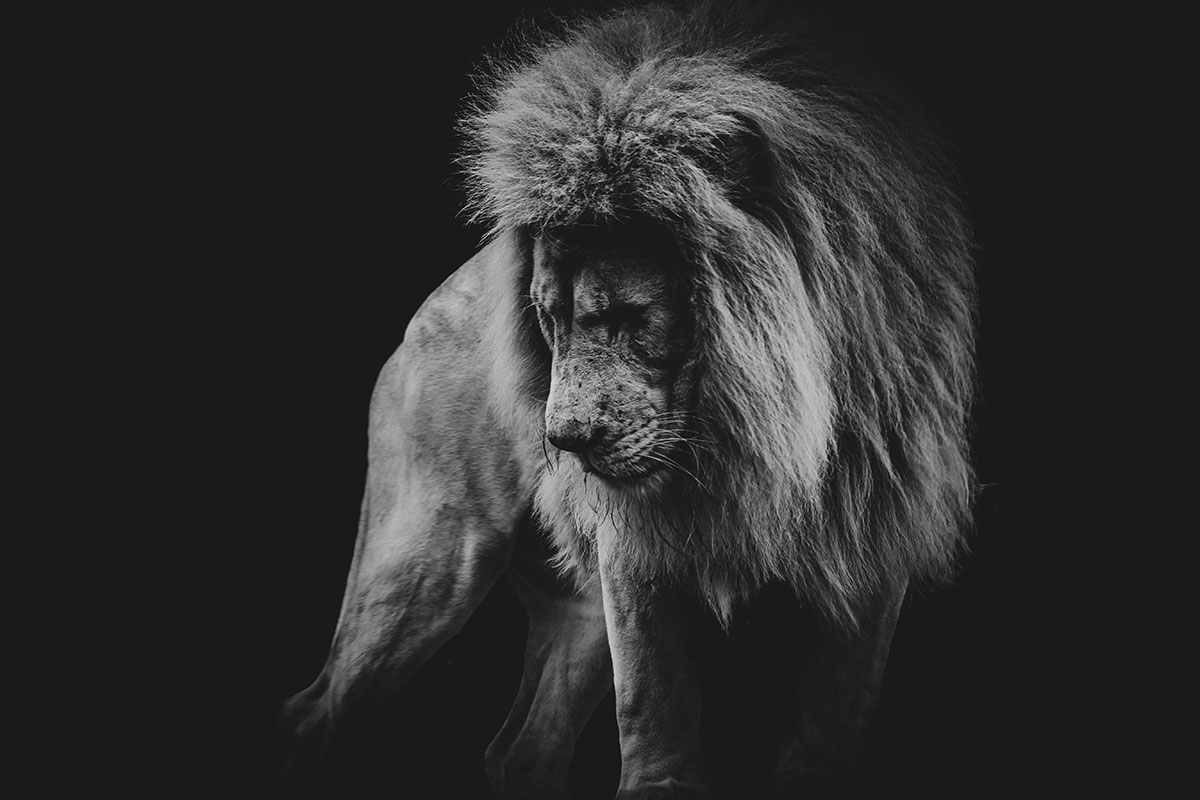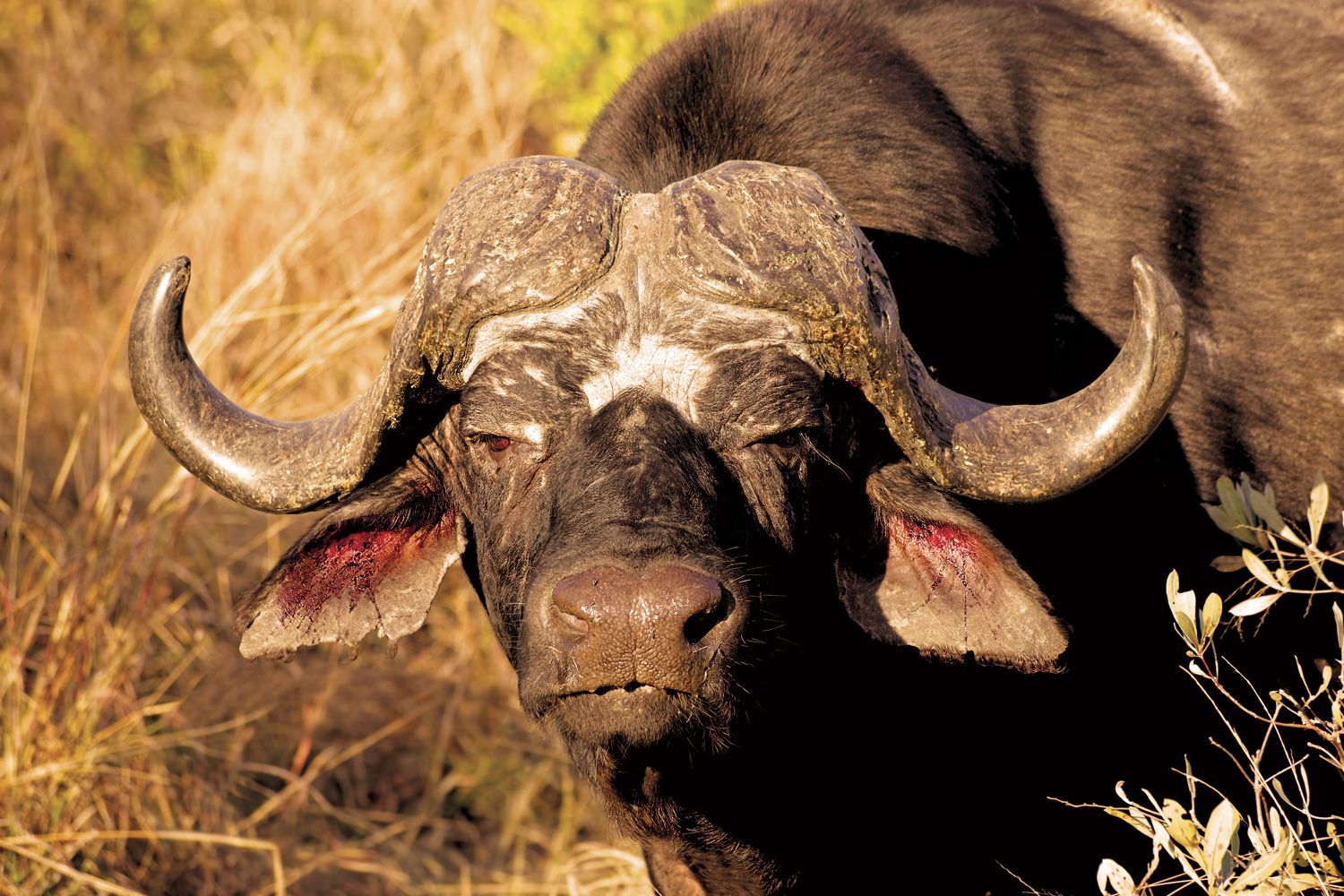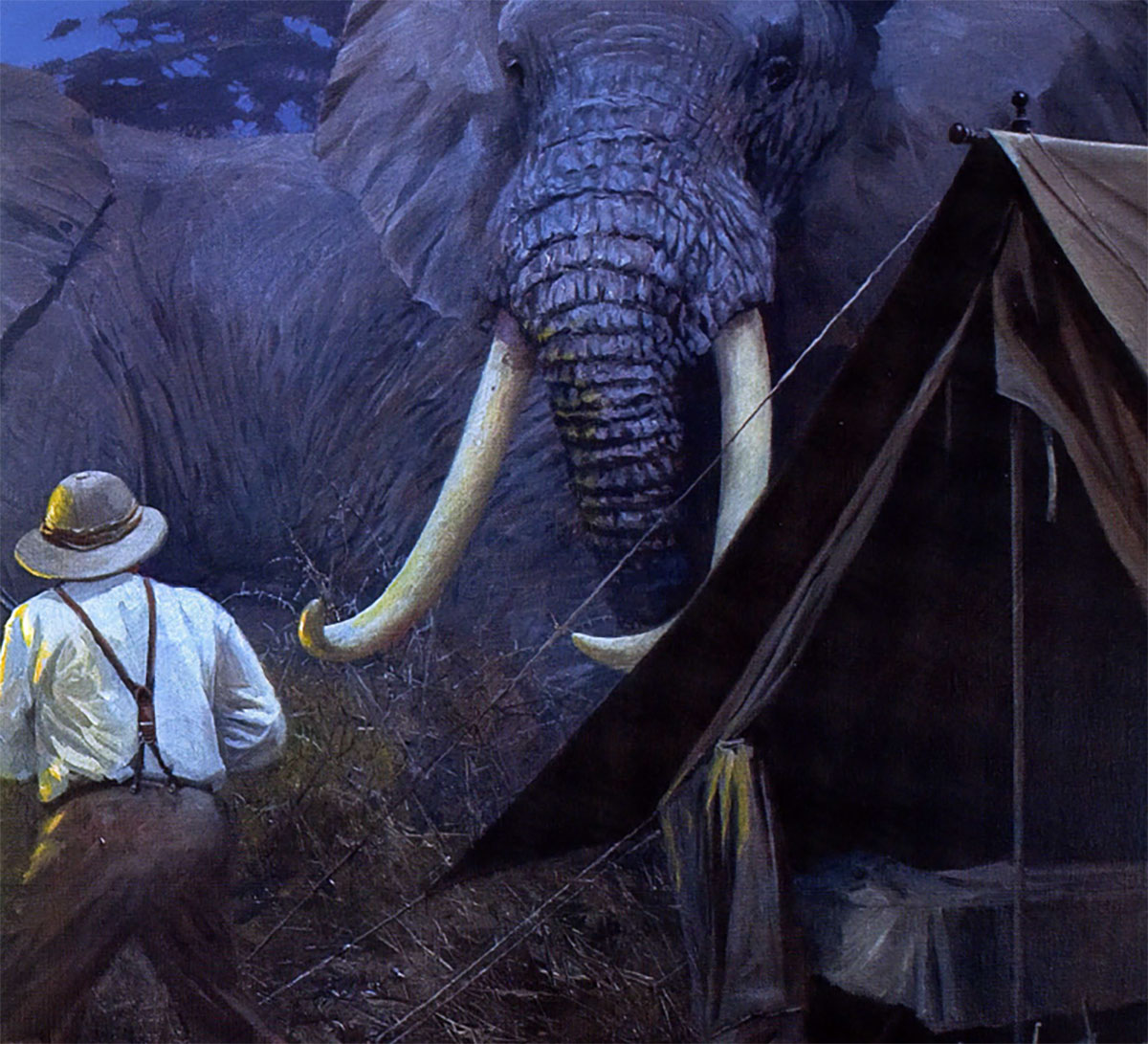Not so renowned as the kudu nor so coveted as the sable, the nyala is, nonetheless, one of the most elusive, striking antelope in all of Africa.
It was royal game in the days of the great Zulu kings. Confined to a rather limited range in northeastern South Africa, eastern Zimbabwe, Malawi and Mozambique, nyala are lovers of dark thickets, wooded lowlands near water, and brushy slopes interspersed with grassy openings. A bull’s spiraling, lyre-shaped horns suggest bushbuck, bongo, sitatunga and kudu. Indeed, it’s a cousin to all these Tragelaphus genus members – the spiral-horned antelopes.
A slate-gray, mature male nyala falls between the bushbuck and greater kudu in size – about 250 pounds – but where it differs markedly is in its shaggy coat. A ventral fringe of long, charcoal-gray hairs drapes from chin to belly. Up top, a crest of white hairs runs from skull to rump, blending into a bushy black-and-white tail and feathered haunches reminiscent of an English setter’s. Nyala bulls flare these hairs during dominance displays to increase their apparent size as much as 40 percent. They’re as fooled by cosmetic puffery as humans for, according to researchers who study such things, the biggest looking bull always wins. This reduces fighting which, considering their sharp, 24- to 33-inch horns, could be deadly. Why risk it when a bit of ostentatious display settles the argument?
As luck would have it, Rick and I actually witnessed such a display. We were sitting on a steep slope above a highland tributary of the Black Umfolozi River near dusk, glassing adjacent slopes for mountain reedbuck when a nyala bull stepped into a grassy opening below. Judging horn length is difficult from above, but Rick assured me this was a young animal, still showing some of the red coat of adolescence and with horns less than 24 inches long. Nevertheless, it was courting a cow that appeared to be in estrus. She was a fetching little thing about three feet high at the shoulder and a third smaller than the male. Her chestnut hide almost glowed in the sunset light, vertical white stripes melting down her sides like vanilla ice cream down a cone.
We weren’t surprised when a bigger bull stepped out of some trees and walked stiff-legged toward the couple. He approached like an arthritic old man with agonizingly slow steps. The smaller bull lowered its head, arched its back and flared it hairs. The big guy turned broadside, matched and then exceeded this display, his long tail arching over his rump and flaring magnificently as he froze in all his splendor. Slowly, ever so slowly the smaller bull deflated and inched away to join two other bulls at the edge of the trees.
There was no way to approach the animals unseen, so we continued watching, eventually spotting another bull and four bright cows slightly above them, a herd of impala silhouetted on a ridge even higher, and a band of six mountain reedbuck on the grassy slope before dusk closed the show.
That we had witnessed so many nyala and such intimate behavior would scarcely have been believed by turn-of-the-century African hunters who found the species exceedingly rare and confined to dense jungle lowlands in Amatongaland – today’s Mozambique and extreme northeast Zululand.
Frederick Selous wrote in his 1908 African Natures Notes and Reminiscences that the “inyala is perhaps at once the most beautiful and the least known [antelope] to naturalists and sportsmen.” Late in his career the great African hunter/naturalist made a special trip from Pretoria to the Maputo River just to secure the species for two museums and his own collection. He complained of having to hunt “bent nearly double” while creeping along hippo tunnels through thick thornbush where he found his quarry exceedingly shy. However, Selous also noted the virtual absence of all other wild game from rhinos to lions, owing to constant persecution by native Amatonga hunters. He credits the nyala’s survival to their jungle haunts and secretive habits, brought about, no doubt, by excessive hunting pressure.
In contrast, Rick and I found nyala quite common in the mountains of Hluhluwe/Umfolozi National Park and 60 miles northwest in the Vryheid district where we hunted. At both places we spotted single bulls and small bands of cows and young bulls in grassy meadows and open woods, beside palm-lined rivers, and in thorn-scrub both mornings and evenings. I suspect, like most game when unharrassed, nyala are not so nocturnal nor secretive as generally supposed. The Safari Companion, a field guide to African mammals, describes the species as feeding in grassland mornings and evenings, retiring to deep cover during hot, midday hours, resting in light shade in the open on cool winter days, which was how we found them.
 Sporting Classics has compiled this remarkable anthology showcasing the best African adventures published in our award-winning magazine.
Sporting Classics has compiled this remarkable anthology showcasing the best African adventures published in our award-winning magazine.
Ruark, Capstick, Roosevelt, Markham – the legends in outdoor literature are all here, sharing their stories of deadly encounters with dangerous game, of bizarre run-ins with witch doctors, gorillas and man-eaters, of safaris into the uncharted wilds of deepest Africa.
Illustrated by world-renowned artist Bob Kuhn, AFRICA features more than 400 pages of unforgettable stories by some of the finest professional hunters and writers of sporting adventure. Buy Now




